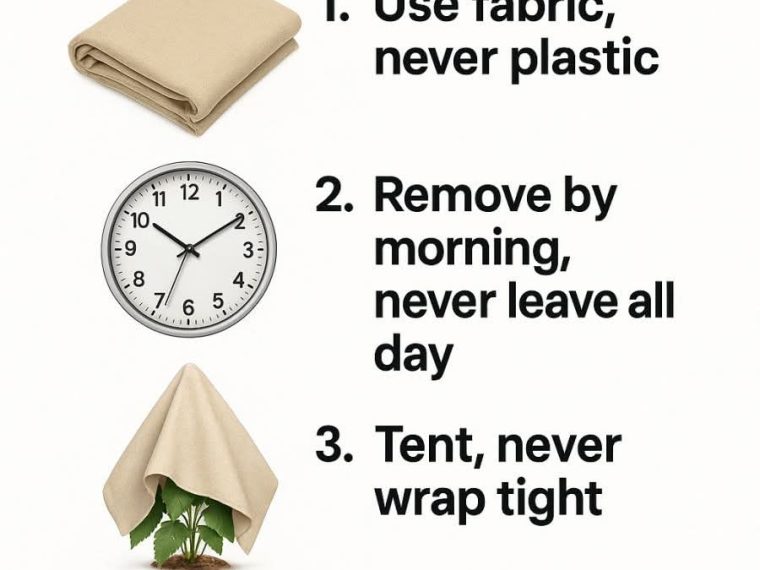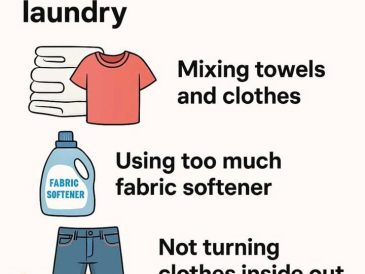As the temperature drops, gardeners everywhere brace themselves for the challenge of protecting their beloved plants from frost. A sudden frost can devastate a garden, turning vibrant leaves into shriveled remnants overnight. While many gardeners think they know how to protect their plants, common mistakes can lead to less-than-ideal results.
In this article, we will explore the most effective strategies for shielding your plants from frost damage. By understanding the intricacies of frost protection, you can ensure your garden will thrive even when the weather is less than cooperative.
1. Understanding the Threat of Frost to Your Plants
Frost occurs when the temperature drops to the point where water vapor in the air forms ice crystals on surfaces, including plants. This typically happens at or below 32°F (0°C). Frost can damage plants by causing the water inside their cells to freeze, leading to ruptured cell walls and ultimately, plant death.
Not all plants are equally vulnerable to frost. Tender plants, such as tomatoes and peppers, are particularly susceptible, while hardy plants like kale and carrots can withstand light frosts. Understanding the frost tolerance of your plants is crucial in deciding the level of protection they need.
2. Why Fabric is the Best Material for Frost Protection
Fabric materials, such as garden fleece or burlap, are excellent for protecting plants from frost. They allow plants to breathe while trapping heat from the ground, creating a microclimate that can be several degrees warmer than the outside air. Fabric is also flexible, allowing it to conform to plant shapes without causing damage.
Unlike plastic, fabric materials do not trap moisture, which can lead to condensation and increase the risk of freezing. Lightweight row covers, for example, can protect plants from temperatures as low as 28°F (-2°C) while allowing 70-85% of sunlight to penetrate, supporting photosynthesis.
3. The Dangers of Using Plastic Covers
While plastic covers might seem like a convenient option, they pose several risks to your plants. Plastic does not allow for air circulation, which can cause condensation to build up underneath. This trapped moisture can freeze, exacerbating frost damage.
Additionally, plastic covers can create excessive heat buildup during sunny days, leading to plant stress. If you must use plastic, ensure there is a layer of air between the plastic and the plant to minimize direct contact and prevent moisture accumulation.
4. Timing is Key: Remove Covers by Morning
It is crucial to remove frost covers first thing in the morning once the frost has melted. Leaving covers on during the day can cause plants to overheat as temperatures rise. Sunlight can also create a greenhouse effect under covers, potentially harming plants.
Removing covers promptly allows plants to benefit from natural sunlight and air circulation, which are essential for photosynthesis and growth. Keep an eye on weather forecasts to ensure you replace covers before the temperature drops again in the evening.
5. The Right Technique: Tent Your Covers, Don’t Wrap
When covering your plants, it’s essential to create a tent-like structure rather than wrapping the material tightly around the plant. Tenting allows for air circulation and prevents the cover from touching the plant directly, which can lead to moisture buildup and frost damage.
Use stakes or a frame to support the fabric, ensuring it drapes over the plant without contact. This method also helps trap heat rising from the soil, providing additional warmth for your plants.
6. Secure Your Covers with Clips, Not Rocks
Using rocks or heavy objects to secure frost covers can damage plants by weighing down the fabric and causing direct contact. Instead, use garden clips or clothespins to gently secure covers to stakes or frames, ensuring they stay in place without causing harm.
Clips provide a secure hold and can be easily adjusted, allowing you to tighten or loosen the cover as needed. This method also prevents fabric from blowing away in the wind, offering consistent protection.
7. The Importance of Air Circulation
Air circulation is vital for preventing frost damage under covers. It reduces the risk of moisture buildup, which can freeze and cause damage. Proper air movement also prevents heat from building up excessively during the day.
Ensure your covers are not tightly sealed at the ground level. Leave small gaps for air to flow through while still trapping enough warmth to protect your plants. This balance is key to maintaining a healthy microclimate under your covers.
8. Choosing the Right Fabric for Different Plants
Different plants have varying levels of frost tolerance, so selecting the appropriate fabric for protection is essential. Lightweight row covers are suitable for tender plants that need protection from light frosts. For hardier plants, heavier fabrics may not be necessary unless temperatures drop significantly.
Consider using multiple layers of fabric for extra protection during severe frost events. Each layer can increase the temperature around the plant by several degrees, providing a buffer against extreme cold.
9. Preparing Your Garden for a Frost Event
Before a frost event, water your plants thoroughly. Moist soil retains heat better than dry soil, helping to protect plant roots. Mulching around the base of plants can also provide additional insulation.
Prune any dead or damaged foliage to prevent ice buildup and reduce the risk of disease. Additionally, consider moving potted plants to sheltered areas or covering them with fabric to shield them from frost.
10. Common Misconceptions About Frost Protection
One common misconception is that all plants need to be covered during a frost. In reality, only frost-sensitive plants require protection, while hardy plants can often withstand light frosts without issue.
Another myth is that thicker covers always provide better protection. In fact, overly thick covers can prevent sunlight and air from reaching plants, causing more harm than good. It’s important to balance protection with the needs of your plants.
11. Viral Frost Protection Hacks: What Works and What Doesn’t
Some viral frost protection hacks, such as using Christmas lights to warm plants, can be effective if implemented correctly. Low-wattage lights can provide gentle warmth without causing overheating.
However, other hacks, like using plastic bottles or bags as covers, often do more harm than good due to poor air circulation and condensation issues. Always evaluate the practicality and safety of viral hacks before applying them to your garden.





